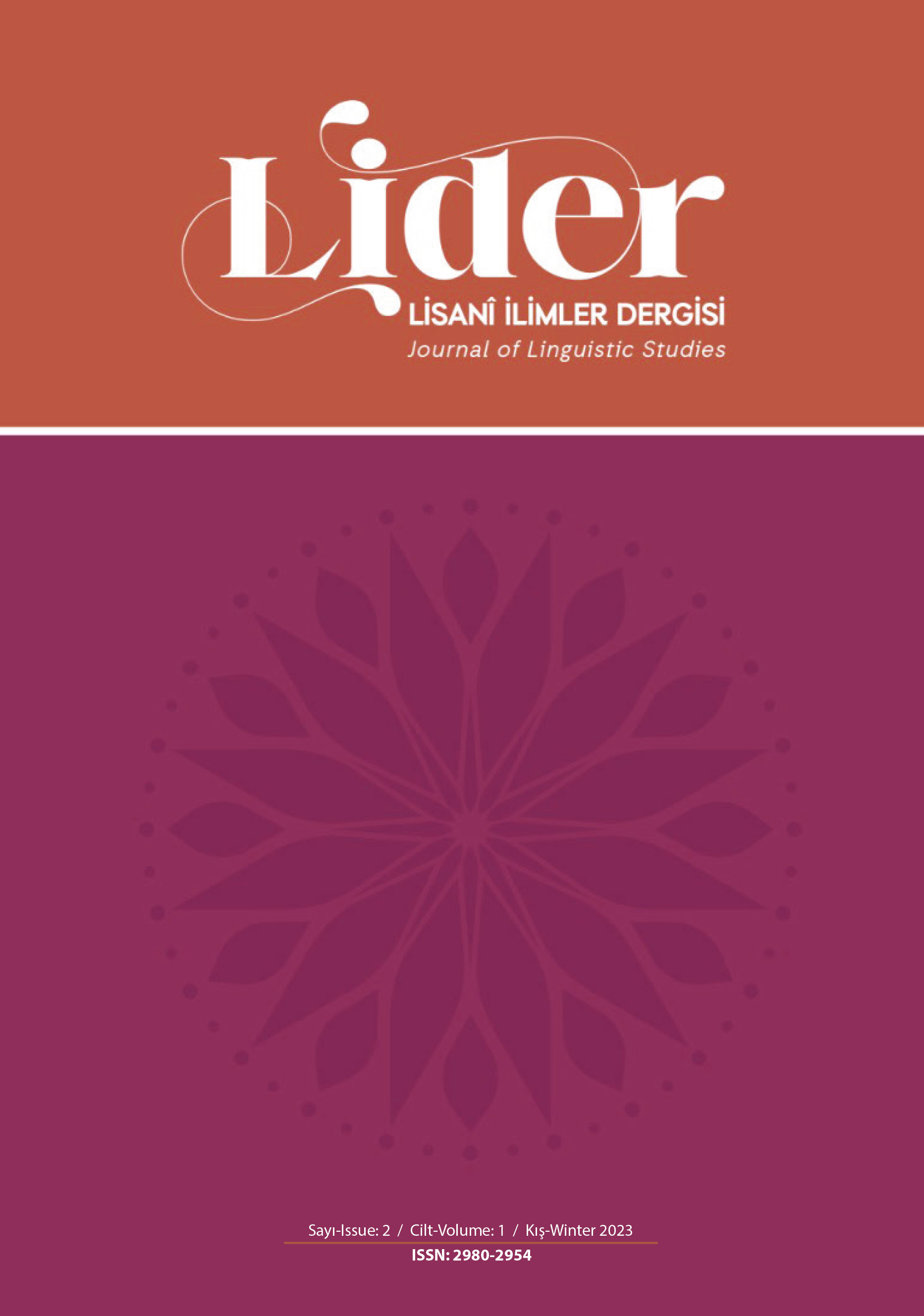COMPARATIVE ANALYSIS OF THE TURKISH TRANSLATIONS OF MAHMOUD DARWISH'S POEM "LEYLETU'L-BÛM"
Main Article Content
Abstract
In general terms, translation can be defined as the process of transforming the message in the source language into a narrated message by maximizing the equivalence of the content in the message at one or more levels. Translation criticism, which was initially seen as a false hunt, is now defined as “an objective activity that evaluates translation as a whole with its positive and negative aspects” (Wilss, 1982, s.216).
This article contains a comparative analysis of the Turkish translations of the poem
Layletu’l-Bûm by Mahmûd Dervish, one of the symbols of Modern Arabic Literature
and considered as the national poet of Palestine. There are two translations of the
poem into Turkish. One of the translations was made by Gazi University lecturer Prof.
Dr. Mehmet Hakkı Suçin and the other one belongs to Metin Fındıkçı. These translations were discussed using the comparative analysis method proposed by Raymond Van den Broeck. In the study, firstly, information about translation, literary translation, poetry translation, translation criticism and poetry translation criticism was given and the comparative analysis method, which is the basis of the study, was defined. Afterwards, the poet’s life and works are explained, and then information about the translators is given. In the findings section of the study, the Turkish translations of Mahmûd Derviş’s
poem Leyletu’l-Bûm were examined comparatively.
According to the findings, it was found that Prof. Dr. Mehmet Hakkı Suçin’s translation
was acceptable, while Metin Fındıkçı’s translation was not sufficient.
Article Details

This work is licensed under a Creative Commons Attribution 4.0 International License.
References
Aksoy, B. (2001). Çeviride Eşdeğerlik Kavramı. Çeviribilim ve Uygulamaları Dergisi, (11), 1-6.
Akşit, E. (2016). Mahmud Derviş'in Şiirinde Evreler- I. Mizanü'l-Hak: İslami İlimler Dergisi, (3), 13-36.
Broeck, R. (1985). Second Thoughts on Translation Criticism: A Model of its Analytic Function. The Manipulation of Literature: Studies in Literary Translation. (Ed: Theo Hermans). London& Sdyney: Croom Helm. 60-61.
Can, B. (2023). Filistinli Şair Mahmûd Derviş’in “Kaktüsün Sonsuzluğu” Adlı Şiirinin Türkçe Çevirileri Üzerine Karşılaştırmalı Bir Analiz. Söylem Filoloji Dergisi, (Çeviribilim Özel Sayısı), 344-362. https://doi.org/10.29110/soylemdergi.1187180
Dağbaşı, G. (2017). Muhammed Teymûr’un Fî’l-Kitâr İsimli Kısa Öyküsünün Farklı Çevirilerinin Karşılaştırmalı Olarak Değerlendirilmesi. Hitit Üniversitesi Sosyal Bilimler Enstitüsü Dergisi, 10(2), 1409-1424. https://doi.org/10.17218/hititsosbil.296620
Derviş, M. (2009). Yalnızlık Yenilemeden Kendini. (Çev. M. Fındıkçı). İstanbul: Can Yayınları.
Derviş, M. (2017). Atı Neden Yalnız Bıraktın. (Çev. M. H. Suçin). İstanbul: Ayrıntı Yayınları.
Dervîş, M. (2001). Limâzâ Terekte’l-Hısâne Vahîden. Londra.
Fazlıoğlu, Ş. (2019). Mahmûd Dervîş. Türkiye Diyanet Vakfı İslâm Ansiklopedisi. https://islamansiklopedisi.org.tr/mahmud-dervis
Hengil, Ö. (2023). Teysir Halef'in "Darwin’in Serçeleri" Romanındaki Deyimlerin Çevirilerinin Mona Baker'in Çeviri Stratejilerine Göre İncelenmesi. Söylem Filoloji Dergisi, (Çeviribilim Özel Sayısı), 460-473. https://doi.org/10.29110/soylemdergi.1186163
Karantay, S. (1993). Çeviri Eleştirisinin Bilimsel Konumu Üzerine Eleştirel Görüşler ve Bir Model Önerisi. Dilbilim Araştırmaları Dergisi, (4), 17-24.
Kuçuradi, İoanna. (1978). Şiir Çevirisini Değerlendirme ve Türkçe’de Homeros. Türk Dili Dergisi, (Çeviri Sorunları Özel Sayısı), 111-116.
Slype, G. V. (1983). Better Translation for Better Communication. Oxford: Pergamon Press. 373-373. https://doi.org/10.1002/asi.4630350613
Ürün, A. K. (2018). Modern Arap Edebiyatı. Konya: Çizgi Kitabevi Yayınları.
Wilss, W. (1982). The Science of Translation. Tübingen: Gunter Narr Verlag.

